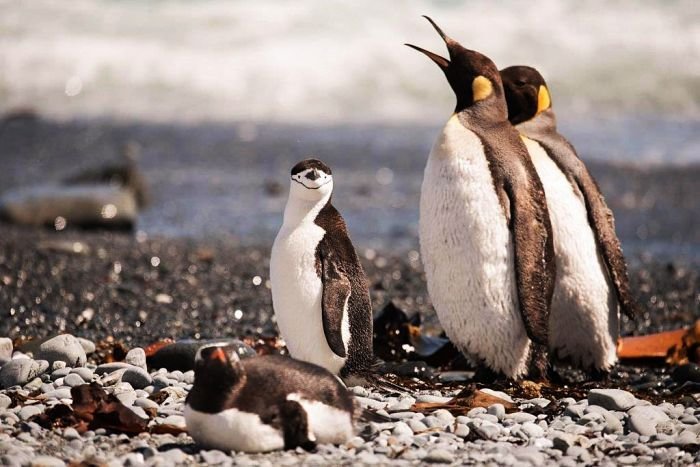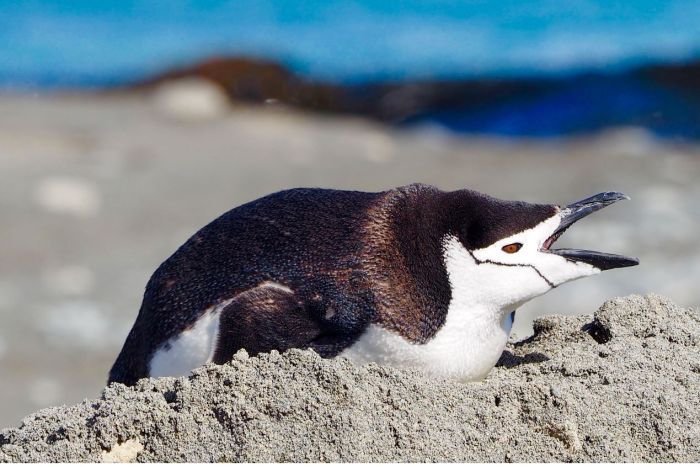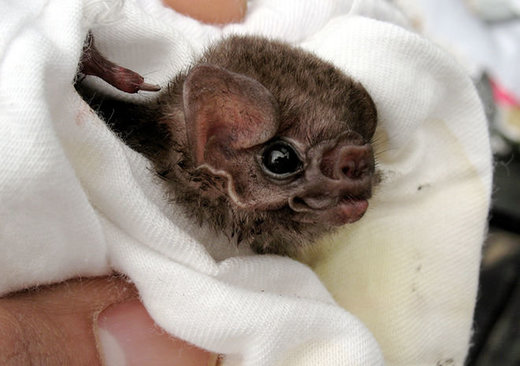Antarctic researchers are not actually sure, but when one little chinstrap penguin made a very rare appearance on remote Macquarie Island recently there was great excitement.
The chinstraps are cousins of the more common adelie penguins, but the nearest colony of chinstraps is about 1,500 kilometres south of Macquarie Island
There have only been five chinstrap sightings on "Macca" since 2013, and 44 since 1953.
Australian Antarctic Division penguin biologist Barbara Wienecke said most chinstrap populations live on the Antarctic Peninsula, South Orkney Islands and South Georgia.
"Macquarie Island is certainly a paradise for penguins, but the species that usually breed there do not include the chinstraps," she said.
"It is always exciting when people see birds that are a long, long way from what is considered their normal range by biologists, but clearly, what do we know?"
"A bird is called a 'vagrant' once they are several hundred kilometres out of the range from what they are usually expected, and the nearest colony of chinstraps would be about 1,500 kilometres south of Macquarie Island, so it is one heck of a distance to swim."
Dr Wienecke said when penguins were swimming around the ocean they did not usually travel on a north-south trajectory and it was not clear why this one turned up so far from home.
"It is always difficult to figure out birds' motivations," she said.
"The problem is, particularly for the young birds, we don't really know how far they actually disperse.
Penguin may simply be exploring

"Birds are extremely good navigators unless they have some some sort of genetic abnormality that would prevent them from navigating properly, which is possible but probably extremely rare," she said.
"So young birds who have got no need to be anywhere near their breeding colonies, they usually have several years when they can explore the southern ocean and sometimes they literally just take a turn and go elsewhere, where possibly not too many have gone before."
Dr Wienecke said it was unfortunate that such random visits afford little opportunity for scientists to learn more about the species' travel habits.
"It would be fantastic if we had a program in place and equipment on the island to put a little satellite tag on the bird and actually see where it would go when it leaves Macquarie Island, but it is impossible to plan for such events, because you don't know when they are going to happen," she said.
She said it was not as simple as popping a spare tracking device on the bird and seeing where it wanders.
"I mean, we can't just go out and harass birds just because we think it's a wonderful idea — we do need to have properly assessed and evaluated research programs in place, we do need ethics committees approvals — there is a whole raft of documents that need to be in place before we can actually do something like that," she said.






Followed Scott's avice.
Gravity: The word planet comes from ancient Greek and means “wanderer,” whereas the Sanskrit word for planet is even more telling. It is “graha,” which means to “grab” or “grasp.” Graha gave us the English word “gravity.” Just as we are in the grip of the gravitational fields of the Sun, Moon and Earth, so on a subtler level we are in the “grip” of invisible pushes and pulls that correlate with the movements of the planets
The word planet comes from ancient Greek and means “wanderer,” whereas the Sanskrit word for planet is even more telling. It is “graha,” which means to “grab” or “grasp.” Graha gave us the English word “gravity.” Just as we are in the grip of the gravitational fields of the Sun, Moon and Earth, so on a subtler level we are in the “grip” of invisible pushes and pulls that correlate with the movements of the planets.
Shark bites lifeguard off Jensen Beach, Florida
A Martin County beach will reopen for swimming Saturday after a lifeguard was bitten Friday by a shark. Martin County Fire Rescue says a lifeguard paddling in the ocean at Jensen Beach was bitten...Parisians on edge as 'endangered' wolves freely roaming suburbs, fear they may make the capital their new home
Parisians are frightened that the endangered beasts are now within howling distance of the capital and can't be stopped French people have been told not to fear wolves roaming Paris streets - as...Norwegian school takes five-year-old children to see reindeer being slaughtered
Preschoolers in Norway took a break from learning their ABCs to watch reindeer being slaughtered and skinned in a move which school says was aimed at teaching them about indigenous peoples who...